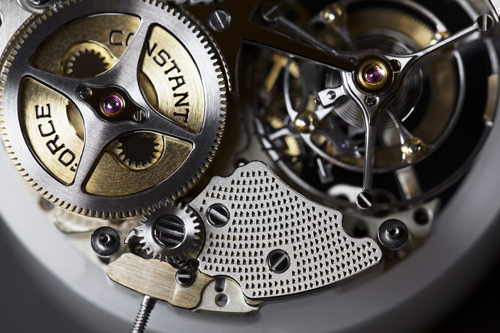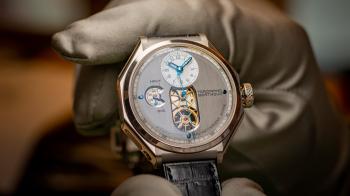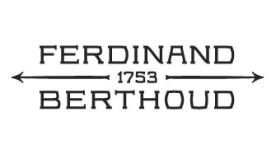It’s rare to even come across one. To see one dismantled, even rarer. So to be present to watch one being reassembled by master watchmakers at the manufacture is the stuff of dreams. And yet, that’s what happened on 17 May. WorldTempus was able to witness the dismantling and reassembly of the Ferdinand Berthoud manufacture movement, in the company of three of the brand’s watchmakers. It was a unique opportunity to get up close and personal with one of the most original movements in the watchmaking world.
Everything in its place (but upside-down)
The FB1 calibre is fundamentally different from any other, primarily because it turns many of the usual watchmaking principles on their heads. The tourbillon, for example: it doesn’t display the seconds, it is the seconds. And it’s not off-centre, it’s smack in the middle, which is probably absolutely unique in the watch world. It also makes eminent good sense for Ferdinand Berthoud, because the second is the timepiece’s fundamental element of precision. And precision is everything: it forms a tangible link with the eponymous genius who devoted his life to designing the ultimate marine chronometer. In this context, central seconds are a logical design feature. The fact that the seconds are driven by a tourbillon is another technical inevitability, because it gives greater precision.

The construction of the fusée and chain is also inverted. Normally, the barrel drum releases its energy gradually and transmits it to the fusée, which regulates this energy and evens it out. The FB1 works the other way around: the fusée literally pulls the barrel drum, which then releases its chain.
Finally, rather than being constructed in a flat plane and held in place by upper bridges, these three components (tourbillon, chain and fusée) are all suspended in a vertical construction and supported by a lower bridge. This is the exact opposite of traditional construction, but it’s both aesthetically and technically logical, given that Berthoud himself built his clocks like this – vertically.
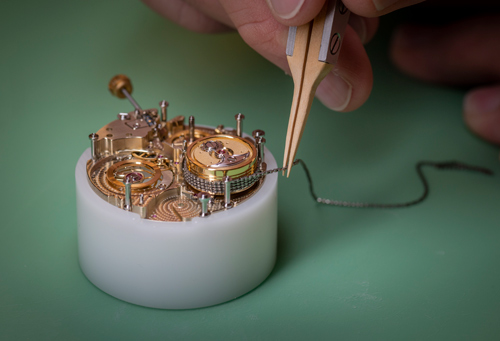
Nods to history
The timepiece conceals a number of other historical reminders. Portholes, for example. They are a feature of many contemporary watch designs, where they serve to reveal the internal mechanics. But for Ferdinand Berthoud, this is not the only reason to include them. The watchmaker himself inserted portholes into his own creations more than 250 years ago. It’s a nod to history, and a concrete legacy.
But there’s another reason: Berthoud was primarily a scientist, a mechanical watchmaker and a genius, and for him the ability to see the mechanism was fundamental. He shared his inventions, just as he shared his results. A scientist has nothing to hide. Quite the opposite: everything must be shown and made public. This is the raison d’être of the sapphire portholes around the case. Showing off the FB1 is not just an aesthetic choice, it’s also a matter of historical and technical coherence.


The FB1 has another intriguing historical detail: it has no lugs. And the reason is that marine chronometers didn’t have them. Obviously. This is one of the features that makes the FB1 the rightful heir to these precision instruments. And yet, there is an intermediate piece (necessary for attaching the watch to its strap) which is in a different material from the case. It’s a reference to the fact that Berthoud’s marine chronometers were always fixed to their gimbals with a piece of steel, which contrasted with the instrument’s brass case. The case of the FB1 is made in the same way. Today, the watchmaker uses different combinations of gold/ceramic, gold/titanium, platinum/ceramic, etc.
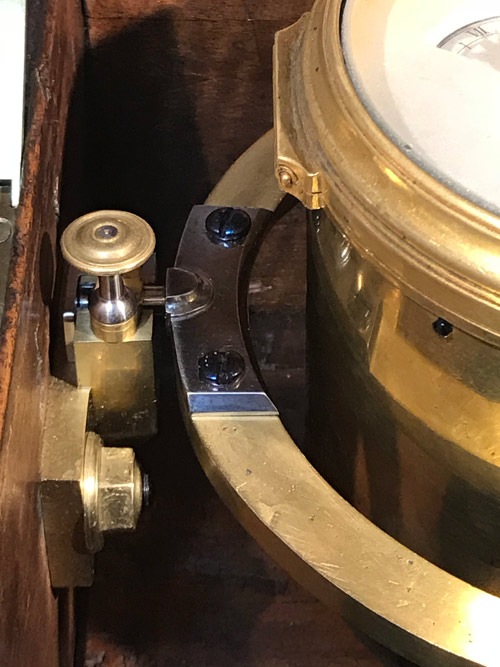
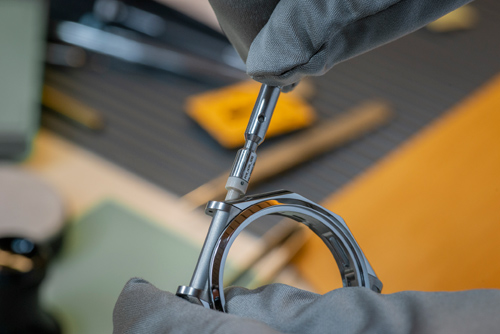
Minute details
It would take an entire essay to describe the countless details that define the identity of the FB1. But among the most intriguing is the wide opening for the axle of the second hand in the FB1R regulator model. Why is it so wide? Because the company wants the ruby at the base of the pivot to be visible!
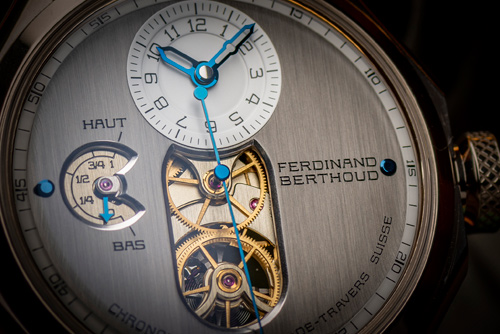
Another technical detail: each crown is unique. In the FB1 models, they are specifically calibrated to their individual movements. Because the torque of every calibre varies from one model to another, each crown is matched individually to deliver the correct torque to its particular movement.
One final detail is the engraving on the regulator’s winding bridge, which features a succession of tiny hand-engraved triangles. This is Ferdinand Berthoud’s signature “pyramid” motif. It is taken from a checkerboard pattern on the marble pedestal of one of Berthoud’s astronomical clocks. The company took the decision not to reproduce the pattern exactly, for the simple reason that it wasn’t on the clock itself, but on its plinth. So the meticulous Berthoud manufacture slightly modified the angles of the motif, to ensure they were not identical to those of the original checkerboard design.

